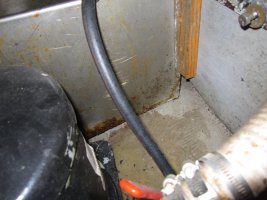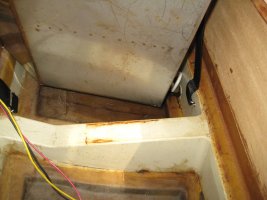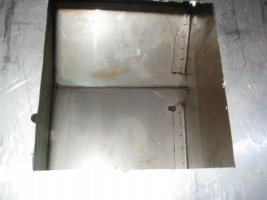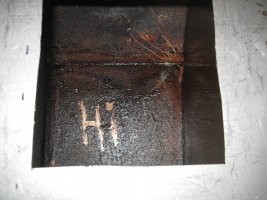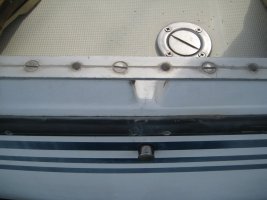I've finally embraced the idea that I need to replace my fuel tank. Maybe it was reading through Jeff's ordeal, or knowing the work and cost involved with replacing it, but reality has finally set in and I know that this tank is probably on borrowed time.

I'm considering going the way of Chaco, who replaced his with aluminum made by American Tank in Costa Mesa. However, Chaco hasn't been on the site for some time and so I'm not sure if the advantages of aluminum, or if the quality of the fabrication have held up since he replaced his tank. My (uninformed) instinct tells me that aluminum would corrode faster than steel, but other posts hold this option up highest. After discussing this with American Tank, a custom 40 gallon tank (design drawings courtesy of Chaco, who posted them to the site) would cost in the vicinity of $650, but that's an 18 gallon increase from the original, and I'd have to compensate for the additional weight of the fuel.
A plastic tank makes intuitive sense to me, but have also read that modern fuel blends will compromise the plastic, and that it doesn't have the rigidity needed for offshore work.
So much for instinct and intuition with material selection. So we're back to looking at steel, and after a phone call to Berry Sheet Metal in Costa Mesa, who supplied the Ericsons with their fuel tanks, it looks to be my best option at the moment.
Thoughts welcomed.
I'm considering going the way of Chaco, who replaced his with aluminum made by American Tank in Costa Mesa. However, Chaco hasn't been on the site for some time and so I'm not sure if the advantages of aluminum, or if the quality of the fabrication have held up since he replaced his tank. My (uninformed) instinct tells me that aluminum would corrode faster than steel, but other posts hold this option up highest. After discussing this with American Tank, a custom 40 gallon tank (design drawings courtesy of Chaco, who posted them to the site) would cost in the vicinity of $650, but that's an 18 gallon increase from the original, and I'd have to compensate for the additional weight of the fuel.
A plastic tank makes intuitive sense to me, but have also read that modern fuel blends will compromise the plastic, and that it doesn't have the rigidity needed for offshore work.
So much for instinct and intuition with material selection. So we're back to looking at steel, and after a phone call to Berry Sheet Metal in Costa Mesa, who supplied the Ericsons with their fuel tanks, it looks to be my best option at the moment.
Thoughts welcomed.
Attachments
Last edited:

